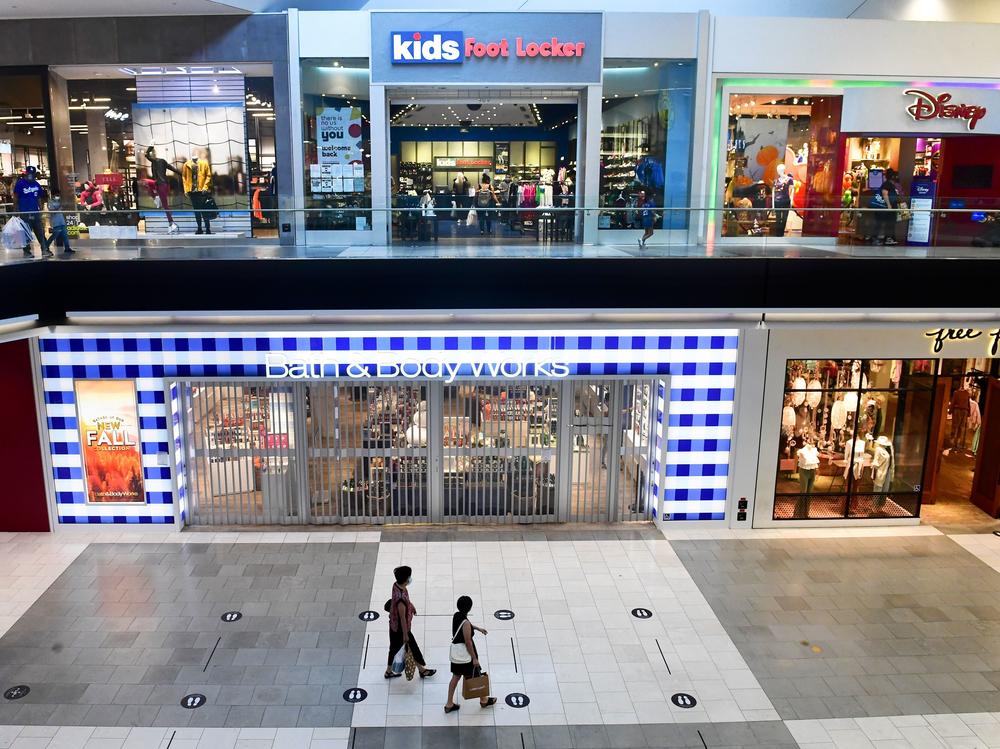Loading...
Section Branding
Header Content
Shoppers Came Back To Department Stores In September, Lifting Retail Sales
Primary Content
Updated at 9:57 a.m. ET
Shoppers bought more clothes and cars, and even returned to beleaguered department stores in September.
This helped lift U.S. retail spending by a stronger-than-expected 1.9% compared with in August, the Commerce Department said Friday, delivering a slight boost of confidence amid a recent spate of signs that the economic recovery has lost momentum from the pandemic's toll.
Spending rose across almost every type of store in September, except for electronics. The biggest winners were clothing stores, where sales jumped 11%, and department stores, which saw a 9.7% increase. Both are trying to climb out of a massive financial hole after shoppers all but abandoned them in the spring. A cascade of bankruptcies followed.
Since the summer, overall retail spending has improved enough to surpass pre-pandemic levels, rebounding from a near-collapse in the spring. Compared to a year ago, September sales were up 5.4%.
But economists were worried that this growth in sales has slowed, as it had inched up less than 1% in both July and August.
A similar slowdown is hampering job growth. In September, many people, especially women, abandoned their job searches and left the workforce. More than 26 million people continue to collect unemployment benefits, and boosted federal checks, which gave shoppers more confidence to spend during the summer, expired at the end of July.
Here's where people were spending in September, compared with a month earlier:
- Clothing and accessories stores: +11%
- Department stores: +9.7%
- Sports, music and other hobby stores: +5.7%
- Car dealerships: +4%
- Restaurants and bars: +2.1%
- Big-box stores: +1.8%
- Gas stations: +1.5%
- Home improvement and gardening stores: +0.6%
- Furniture stores: +0.5%
- Online retailers: +0.5%
- Grocery stores: +0.1%
- Electronics stores: -1.6%
The big question looming over the retail industry now is whether shoppers will splurge during the holiday season. Given the pandemic, will they tighten their belts and skip family gatherings?
For the first time in decades, the National Retail Federation has delayed its holiday forecast. Deloitte predicts sales for the holiday season will likely grow 1% to 1.5%. Bain & Company forecasts they will go up about 2%. That's compared with growth of over 4% in the past two years.
Major stores have already begun their sales season, starting early thanks to Amazon's decision to delay to October its midyear Prime Day sale. For many, the fall deals offer a sort of insurance against that really unpredictable holiday shopping season — as immediate sales to be grabbed now before something else bizarre happens.
Some economists warn that much of the end-of-the-year spending will be shaped by the divide between less-wealthy households whose finances were devastated by the pandemic and higher-income ones that were left financially stable or even better off. A successful holiday shopping season for retailers depends on both to shop with abandon.
Copyright 2020 NPR. To see more, visit https://www.npr.org.

